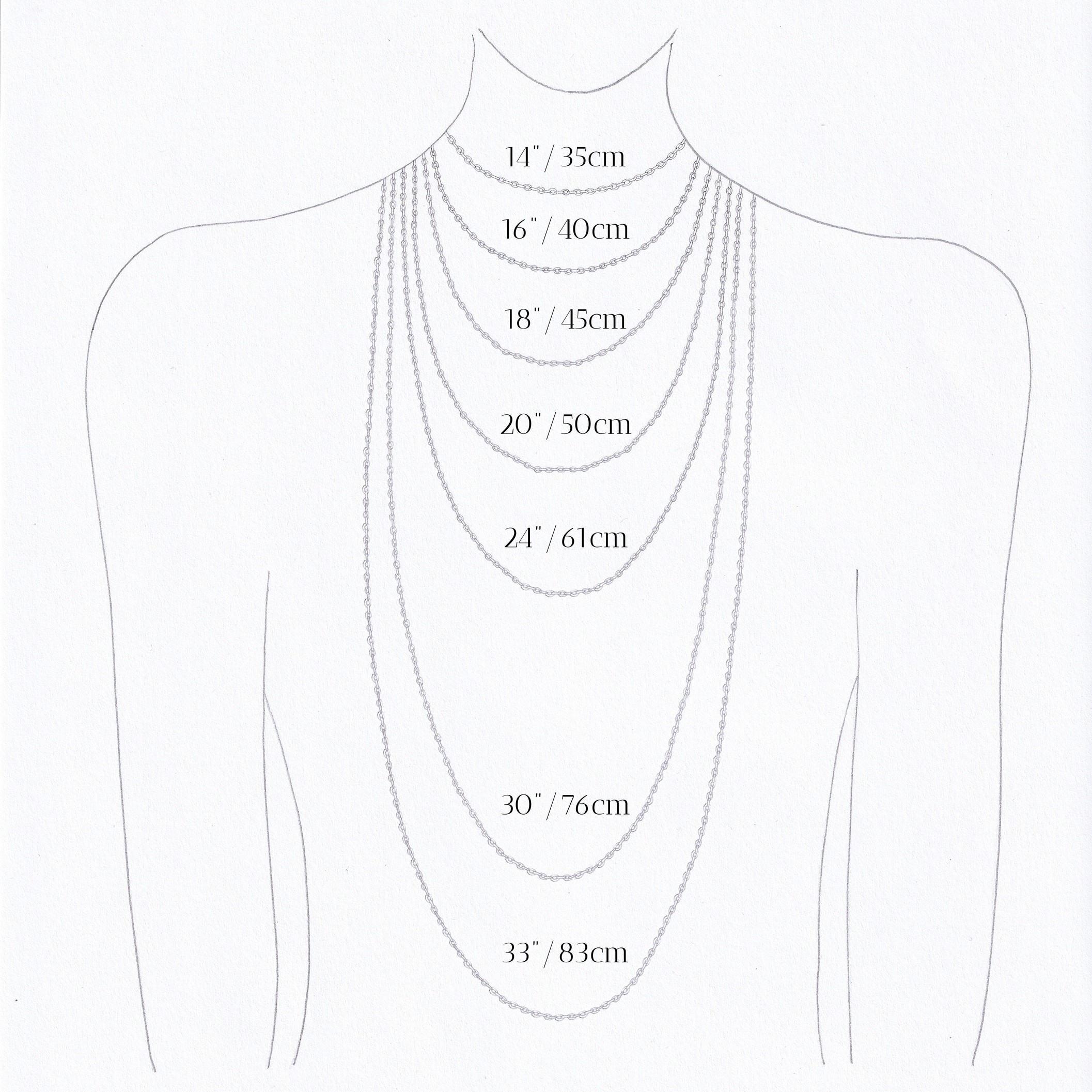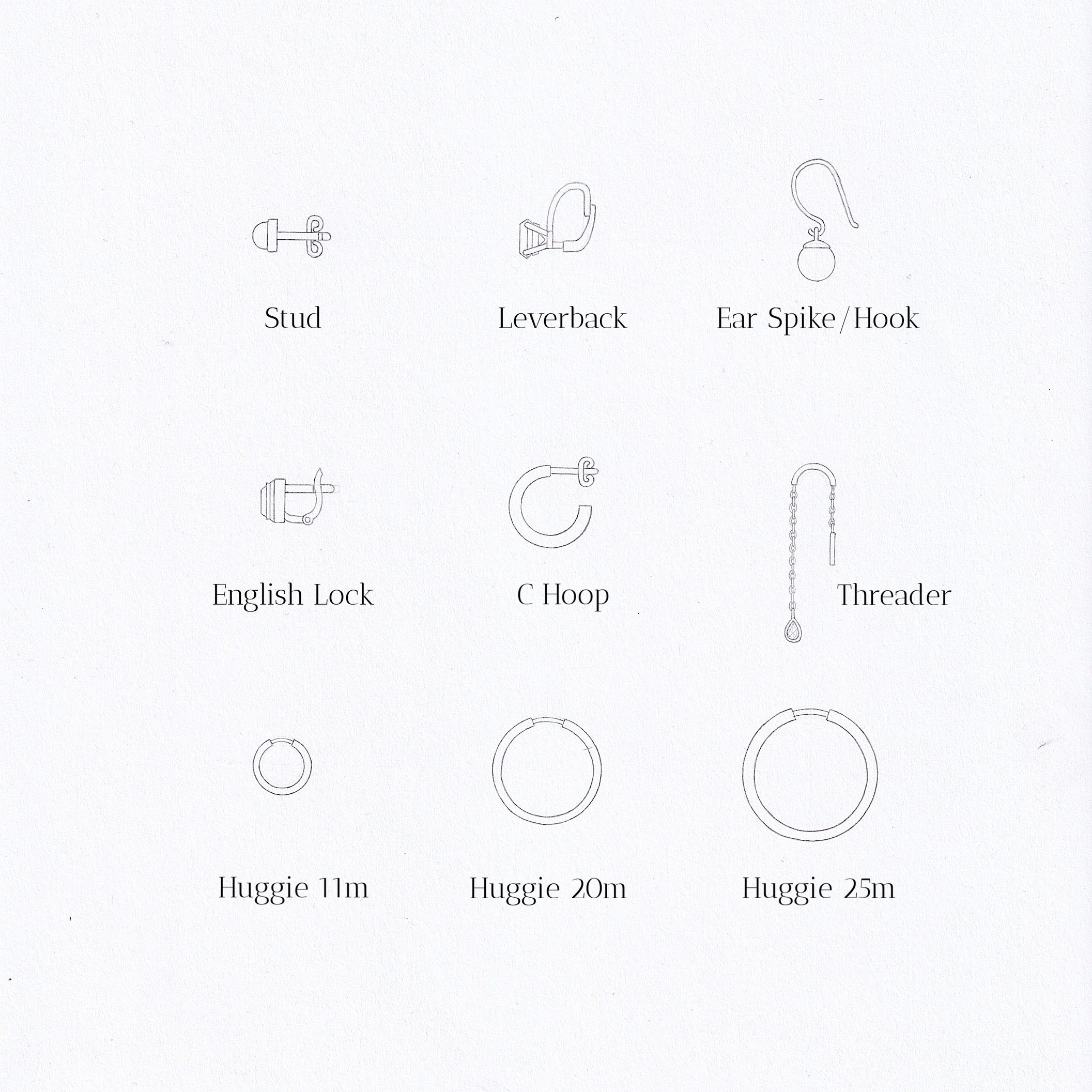Jewellery Guide
Here we take you through some of the most usual questions around jewellery outside of gemstones! These tend to be the mechanics of things, like clasps, that don't immediately seem important but play a big part of yoru bespoke jewellery.
Necklace Lengths
In the jewellery world there are some standard sizes and lengths for things, and necklaces are no different. There are factors to consider when deciding what length is best for you, such as body type, face, and frame, as well as what you may wish to draw attention to/from. Consider that the pendant length/width will also need to be thought about if the chain is to have one on.
Explore the standard necklace lengths with our guide, covering choker, princess, matinee, opera, and rope lengths. When layering necklaces, it’s worth remembering that if it’s a pendant chain it will fall in a V shape rather than a gentle curve of a plain chain.
These are guidelines as every body type is different, so it’s worth trying on a length to make sure it sits exactly where you would like it to.
Collar – 14”
This is tighter and further up the neck.
Choker – 16”
This length sits against the base of the neck.
Princess – 18”
The collar bone is where this length should sit.
Matinee – 20” – 24”
This will lie between the collar bone and the bust.
Opera – 30”
Meant to sit at, on or just below the bust.
Rope/Lariat – 33”+
Should hang below the bust, more waist length and below.

Necklace Lengths
Clasps
There are many types of clasps that you can choose for necklaces and bracelets. Some are more safety conscious than others and some would only suit a certain style of jewellery. So how do you pick? Predominantly the choice is based off size, weight and aesthetics, but often there are still several you could choose.
Spring Ring – You’ll see this type of clasp on lots of necklaces and bracelets because it’s functional and lightweight. They are simple in design, with a small side lever that opens and closes them. The small the clasp, the trickier it can be to use though, and heat can ruin the mechanism.
Lobster Claw – This clasp is stronger and heavier than a spring ring and used more often on expensive pieces due to their durability. They also can offset the weight of a heavier pendant or longer chain.
Barrel – A cylindrical barrel shaped clasp, where the two ends of the fastening either twist or snap together to create a seamless look. They can be difficult for someone with limited dexterity.
Open Box – Comprising of a 'box' and a 'tab', this clasp is designed to be secure and easy to use. The tab slides into the box and locks in place with a click. A small lever/button on the side releases the tab when pressed.
Figure 8 Safety – Not a stand-alone clasp, but used as its name suggests, as a safety measure, often on bracelets. Due to their delicate nature, they can come loose or bend, so it’s important to periodically make sure they still are functioning effectively.
Toggle – This clasp type relies on the weight of the necklace or bracelet to pull the findings in opposite directions to make the piece secure.
S-Hook – With the ability to range from lightweight to heavy, and plain to fancy, the S-Hook is a simple and versatile clasp. It does have the issue of potential unintended opening though.
Bracelet Catch – A traditional clasp, where one end is a metal hook and the other a box, which has a cut out spot inside where the hook fastens. There is then a figure of 8 safety clasp that comes down over the top for additional security.
Pearl - These types of clasps are synonymous with pearl necklaces because they can handle the weight of the pearls whether it be a single or multiple string necklace. They can be large and ornate and often they become a statement piece in their own right adorned with jewels.

Different Clasp Types
Earring Styles
It may seem obvious when you’re talking about different earrings exactly how you imagine the ear post to look, but there are options from Leverbacks to English Locks which can make a big difference to the look and feel of the earrings. Some of the ear post styles will be determined by design, but in some cases it will be down to preference and aesthetic.Take a look at some of the more familiar designs below to discover which is your favourtite.

Different Earring Types